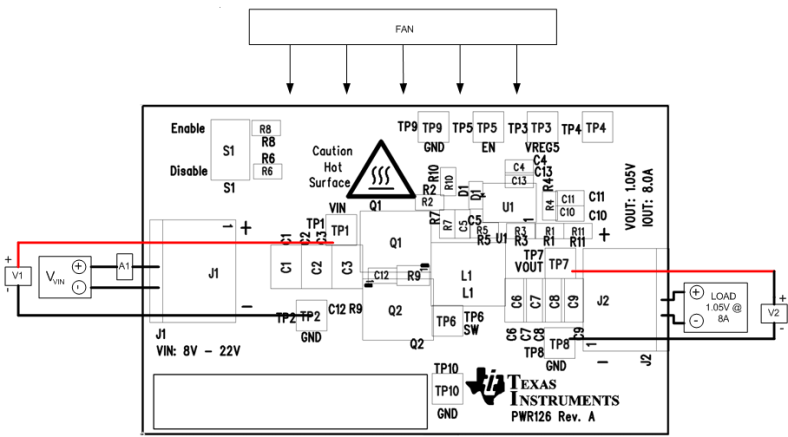SLUU943A May 2012 – December 2021 TPS53014
5.2 Recommended Test Setup
Figure 5-2 is the recommended test setup to evaluate the TPS53014EVM-126. Working at an ESD workstation, make sure that any wrist straps, bootstraps, or mats are connected referencing the user to earth ground before power is applied to the EVM.
 Figure 5-2 TPS53014EVM-126
Recommended Test Setup
Figure 5-2 TPS53014EVM-126
Recommended Test SetupInput Connections:
- Prior to connecting the DC input source VIN, it is advisable to limit the source current from VIN to 2-A maximum. Make sure VIN is initially set to 0 V and connected to J2 as shown in Figure 5-2.
- Connect a current meter A1 between VIN and J1 to measure the input current.
- Connect a voltmeter V1 at TP1 (VIN) and TP2 (GND) to measure the input voltage.
Output Connections:
- Connect Load to J2 and set load to constant resistance mode to sink 0 ADC before VIN is applied.
- Connect a voltmeter V2 at TP7 (VOUT) and TP8 (GND) to measure the output voltage.
Other Connections: Place a fan as shown in Figure 5-2 and turn on, making sure air is flowing across the EVM.